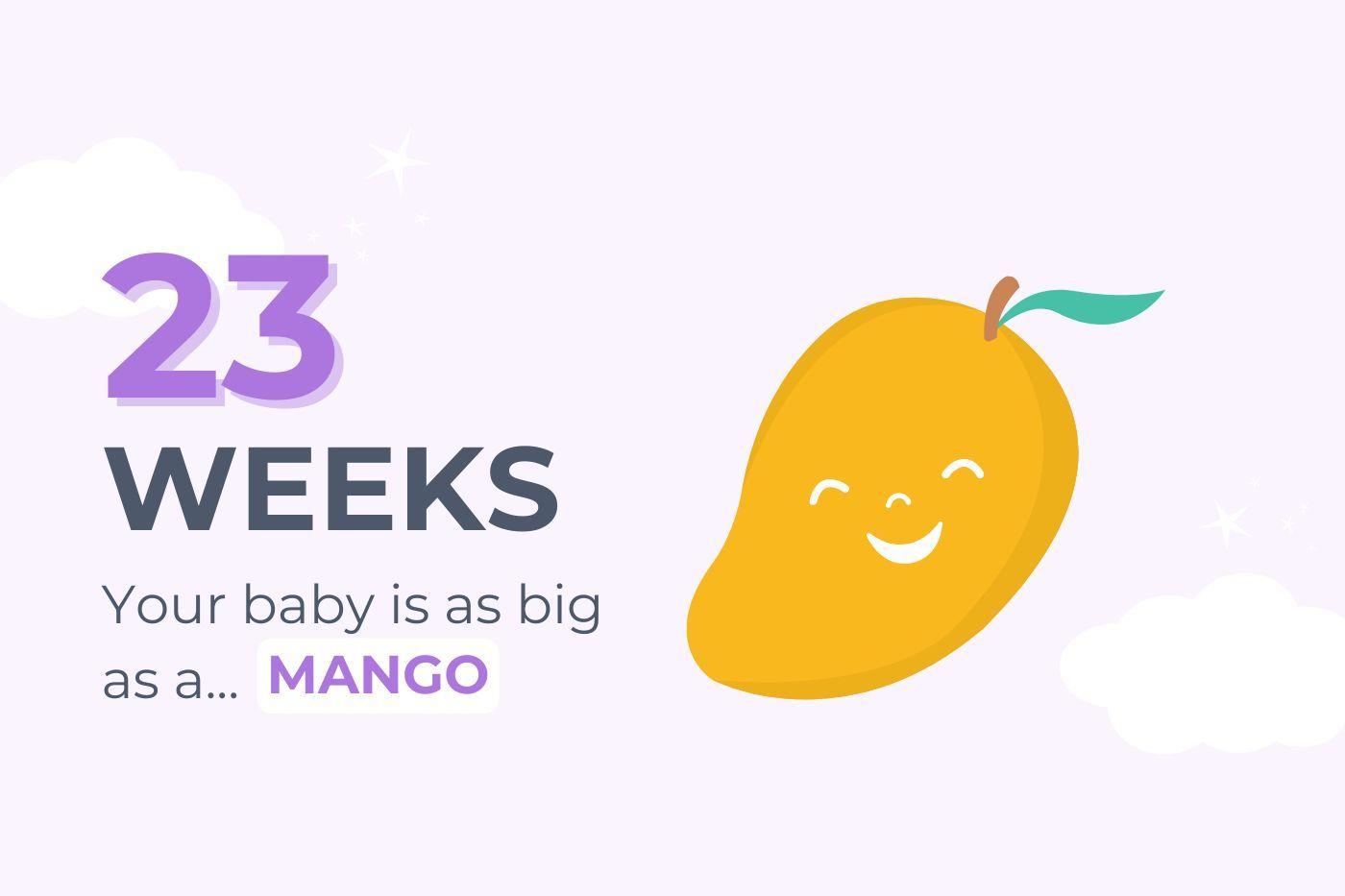PREGNANCY
23 Weeks Pregnant: Gestational Diabetes Explained
Eating healthy during your pregnancy has lots of benefits for you...and your baby!

Written by
Dr. Harvey Karp

SHARE THIS ARTICLE
PARENT PICKS
Bestsellers
PREGNANCY

Written by
Dr. Harvey Karp

SHARE THIS ARTICLE
Bestsellers
Your little one’s face is now fully formed, complete with eyebrows, eyelashes, and the sweetest little nose with nostrils. Their arms and legs are stretching, kicking, and grasping away. Because their skin is still so delicate and thin, it’s covered with a rich, waxy coating called vernix—which has been forming for the past three weeks. Soon, it will be spread all over their body, protecting their skin from the amniotic fluid (imagine how wrinkly you’d get sitting in water for nine months straight!).
This week your bub is starting to put on a bit of baby fat. Right now, they weigh in at about a pound, but they’ll double that over the next month.
And here’s something amazing: your baby can hear muffled sounds through your belly and the amniotic fluid that surrounds them. The tiny bones in their ears are now formed, making it possible for them to hear the world outside. The two sounds they’ll hear most clearly? The rushing whoosh of your blood pulsing through the placenta…and your voice! Your speaking and singing actually echo down through your body, reaching your baby loud and clear.
Twenty-three weeks pregnant is about five and a quarter months along.
At 23 weeks, your baby is about the size of a mango.
Around now, you’ll be asked to take one of the most important routine tests of pregnancy: the glucose screening. This test usually happens toward the end of the second trimester and checks for early signs of gestational diabetes.
Gestational diabetes happens when your body doesn’t make quite enough insulin during pregnancy, causing your blood sugar levels to rise. In turn, your baby may get extra sugar, which can lead to faster weight gain. The good news is that it’s usually a temporary condition that resolves after birth—but during pregnancy, it’s vital to keep blood sugar within a safe range.
There are two types of tests:
If you’re diagnosed with gestational diabetes, your doctor or midwife will help you manage it with dietary changes (think more veg and protein, fewer simple carbs and sugars), exercise, extra rest, and sometimes medication.
Episiotomy, Crowning, Shoulder Dystocia
Disclaimer: The information on our site is NOT medical advice for any specific person or condition. It is only meant as general information. If you have any medical questions and concerns about your child or yourself, please contact your health provider. Breastmilk is the best source of nutrition for babies. It is important that, in preparation for and during breastfeeding, mothers eat a healthy, balanced diet. Combined breast- and bottle-feeding in the first weeks of life may reduce the supply of a mother's breastmilk and reversing the decision not to breastfeed is difficult. If you do decide to use infant formula, you should follow instructions carefully.